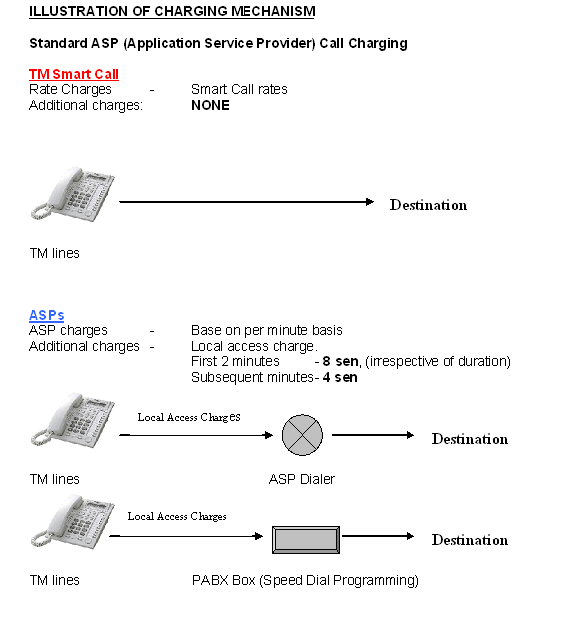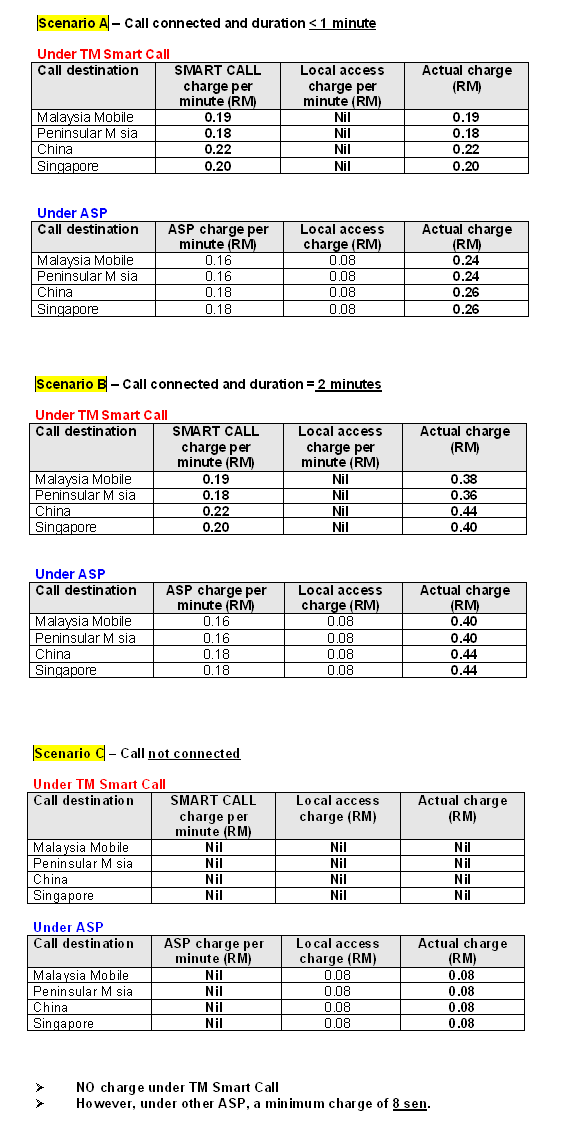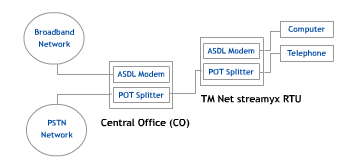|
No More Auto Dialers! Direct Access! Full CLIP Features! No more “Private Number”! 100 % Quality Assurance! Direct PSTN lines! |
||||||||||||||
|
TM Smart Call |
||||||||||||||
 |
||||||||||||||
 |
||||||||||||||
 |
||||||||||||||
|
You can also apply Tm Net Streamyx with us. For unlimited broadband access with tmnet streamyx, you will enjoy faster connections to the internet which enable you to use applications such as video streaming, large file downloads, online games and video conferencing. Tmnet Streamyx brings the web’s rich multimedia content to life, at speed from 512kbps up to 2Mbps |
||||
|
The Technology |
||||
 |
|
The technology which supports tmnet streamyx service is DSL. It stands for Digital Subscriber Line. DSL is the next generation of Internet access technology. A house or business with DSL has a data socket that looks like a phone socket. DSL is a direct connection to the Internet that is always on. Technology has basically enhanced the copper pair to enable data communication at rates of up to 2Mb/s. The types of DSL technology chosen to support tmnet streamyx are ADSL, SDSL and Glite DSL. ADSL stands for Asymmetrical Digital Subscriber Line. It allows you to simultaneously access the net and use the phone or fax (at the same time). GLite DSL is similar to ADSL but has lesser speed capability than full rate ADSL. SDSL stands for Symmetrical Digital Subscriber Line. The different between ADSL and SDSL is SDSL offers the customer symmetrical bandwidth upstream and downstream to a customer (e.g. 1.5Mb/s SDSL Streamyx package offers the customer 1.5Mb/s downstream speed as well as 1.5Mb/s upstream speed). Technologically, SDSL does not allow voice/fax (PSTN) over the same copper. An ADSL system basically consists of two parts ie. the Central Office (CO) which is located at the exchange building and the other, Remote Termination Unit(RTU) at subscriber's premise. The Central Office (CO) and Remote Terminal Unit(RTU) are connected via an existing pair of copper telephone lines. Diagrams belows shows the tmnet direct(ADSL) set up. The Central Office (CO) for ADSL consists of two types of chassis. The first chassis is the ADSL unit for modem cards and control card while the second chassis is for the POTS (Plain Old Telephone Service) splitter. The Remote Terminal Unit (RTU) for ADSL also consists of POTS splitter and ADSL modem. A significant advantage of ADSL is its ability to seperate data traffic from voice communications via one pair of existing copper wire. The voice communication is split off from the data traffic by POTS splitter hence allowing uninterrupted telephony services even if the ADSL fails. The diagram above shows the ADSL whereby the voice communication is split and sent to the PSTN (Public Switched Telephone Network) while the data traffic is sent to the broadband network. While in the SDSL network set-up (where it only supports data), there will be no network element of voice network (PSTN). The customer is connected directly into the broadband network. |
|
|
|
 |